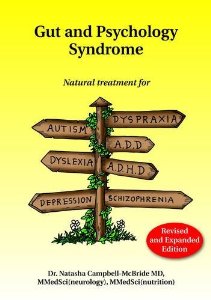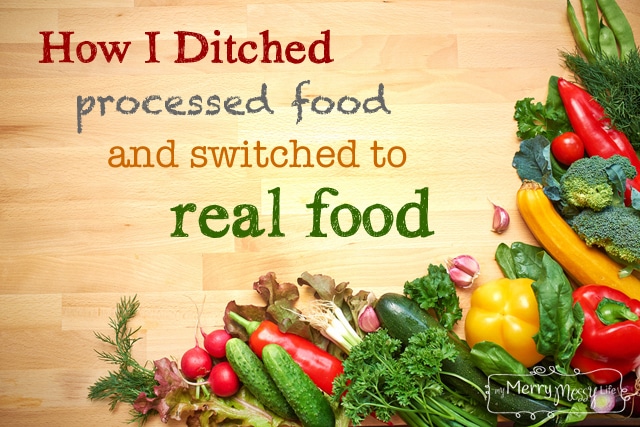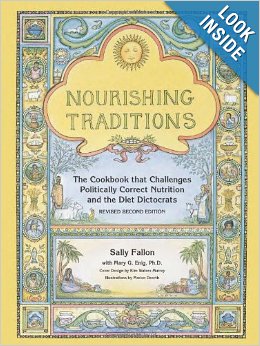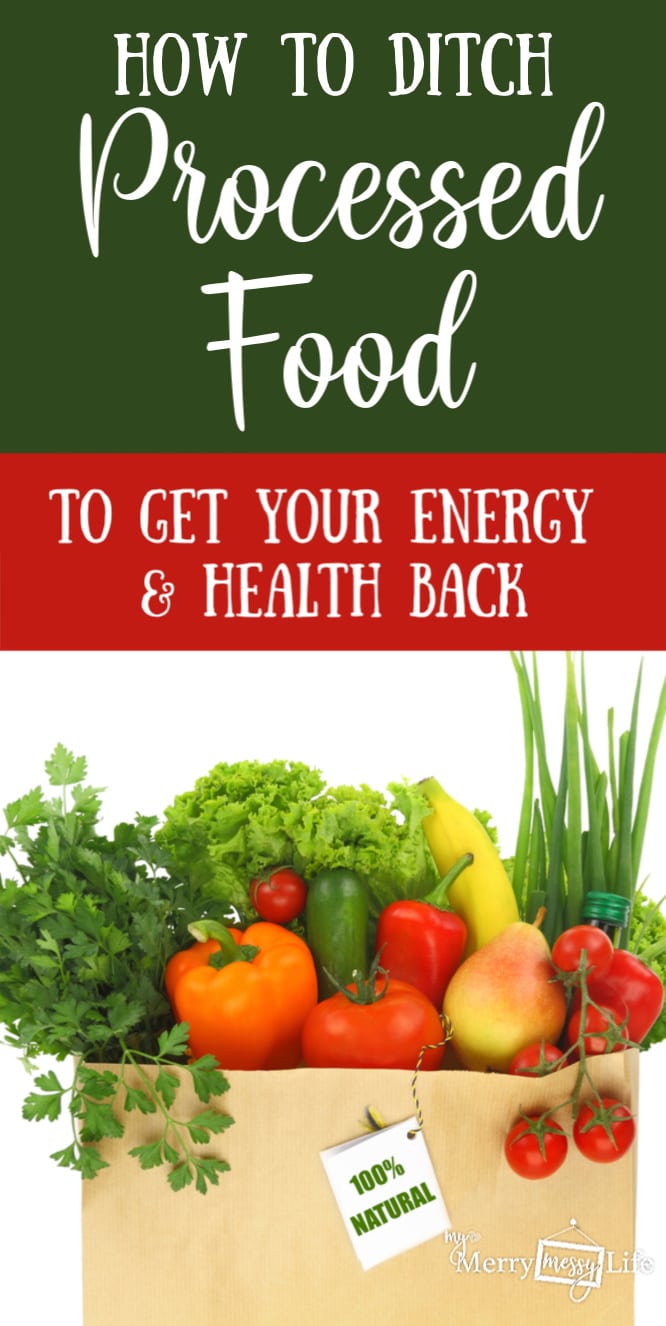How I Ditched Processed Food and Switched to Real Food and the GAPS Diet
Transitioning from processed food to real food can be overwhelming, even when the desire and motivation is great, because we live in such a processed world. However, I'm living proof it can be done and wanted to offer tips so it's not as hard for others!
What is Real Food and Processed Food?
When I talk about real food, I'm referring to eating as close to nature as possible. Eating products of nature and not industry. Simple as that. In general, if it comes in a box, it's been processed. What's wrong with processing? Processing helps preserve food, makes it cheaper to manufacture, and adds convenience. But it also alters food and in most cases, removes the nutrition, even creating anti-nutrients which feed bad bacteria and yeast in the intestines. It is then added back in in chemical form (the added vitamins and minerals). Our bodies are smart enough to recognize the difference between real and fake and they end up not being assimilated properly, so are, therefore, not very effective!
1. Focus on Ingredient Labels Instead of Nutrition Labels
Read, read, read the list of ingredients. Do you know exactly what's in your food? If not, look it up! I encourage you to research every ingredient that's in your food before eating it and decide for yourself if it's worth the risk. For instance, I've been buying shredded cheese for a long time. Such an easy snack to feed my kids (and me, for that matter). I was still buying it until just a few weeks ago when I realized I hadn't actually looked at the label. To my utter disappointment, it contained:
Nonfat Cheddar Cheese (Pasteurized Skim Milk and Milk [Trivial Source of Fat],Salt, Yeast [Ingredient Not in Regular Cheddar Cheese], Cheese Culture, Artificial Color, Natural Flavor [Ingredient Not in Regular Cheddar Cheese], Enzymes, Vitamin A Palmitate); Potato Starch, Cellulose and Calcium Sulfate Added to Prevent Caking; Natamycin (a Natural Mold Inhibitor).
I wasn't so worried about the nonfat cheddar cheese (though I now buy organic whole milk, raw milk, or raw goat's milk cheese), but the:
- Artificial color – Too ambiguous for me – what exactly are they coloring it with? And why is it even added – what's wrong with plain, natural cheese color? I don't want that.
- Natural Flavor – Not specified either, *eyebrow raised.*
- Potato starch – Not good when I'm trying to stay away from starches and all sugar.
- Cellulose and Calcium Sulfate to prevent caking – Know what these are? Cellulose is made from cotton or wood pulp. Yep, wood pulp. It is also indigestible. Undigested matter causes damage to the intestines and in the case of a GAPS or leaky gut patient (like me), leak out of the intestines and into the bloodstream where it is attacked, causing inflammation. And Calcium Sulfate is also known as plaster of paris. Yes, I'd like the same stuff you put in a cast to fix my broken bones in my shredded cheese, please.
Thankfully, most of the blocks of even the non-organic cheeses contain just the ingredients needed to make cheese and no crappy stuff. So, now I shred my own. More work? Yes, it is. But I'm tired of being tired and always having eczema.
 2. Start Cooking More From Scratch
2. Start Cooking More From Scratch
This is the hardest part. We are so accustomed to the convenience of processed food, it's a huge change of lifestyle to switch. But your body will thank you for it, I promise! The best cookbook I've ever owned outlines how to cook real food from scratch and has many informative articles to teach you about food and how it can both heal and destroy – Nourishing Traditions.
The number one thing I've learned from that book is the incredible nutrition that fermented foods (like sauerkraut and pickled carrots, and homemade yogurt) offer, but the proper way to eat grains by soaking them first so that it's more easily digested and assimilated into the body. Fascinating book!
There are tons of real food bloggers who offer delicious recipes. I suggest starting there as that has made it easier for me. Here is a list of some of my favorites:
- The Nourished Kitchen
- Health, Home and Happiness
- The Healthy Home Economist
- Dr. Jockers
- Weed Em And Weep
- Cheeseslave
- Our Nourishing Roots
3. Shop the Perimeter of the Grocery Store
Produce, meats and dairy. Buy the highest quality food you can afford. We've made more room in our food budget because we've put a high priority on buying good quality food. I figure if we don't have our health, what do we have? Life is enjoyed more fully while in good health, in my opinion. So, here are the things I look for in my produce, meat and dairy:
- Produce – I buy organic unless it is just ridiculously expensive. For example, organic bell peppers tend to be double or triple the cost of non-organic ones and I just can't buy them. So, I try to buy from the “Clean Fifteen” list instead and avoid the produce from the “Dirty Dozen” list.
- Meats – I look for grass fed, pastured beef and free range chickens; beef without nitrates (a red dye they use in beef), and no hormones and antibiotics. The way I see it, I want to buy products that came from healthy animals. Animals that are penned in cages are pumped full of antibiotics because they are in totally unnatural environments and, therefore, get sick. Just like we would if left in a prison cell about 3 feet square with only GMO corn to eat. Healthy animals produce healthy, nutritious meat and dairy products. To find local farmers, the Weston Price Foundation has chapters all over the country who specialize in finding local farms who sell food according to their standards. I've found several excellent farms in my suburban area that practice traditional, healthy, humane farming methods.
- Dairy – I buy eggs from free range chickens (not necessarily organic due to the cost and not just cage free – free range is better), that are exposed to sun and fresh air, and have normal chicken behaviors like roosting. I found a lady at our church who sells them from their family farm, and the proceeds go to support the ministry they run there to help transition women from jail into the world again. Isn't that awesome? We will get our own chickens in the near future, and this will be taken care of!
- Fish – I buy wild caught fish instead of farmed. They come from deeper, less polluted waters and aren't confined like farmed fish. Alaskan fish is the best as it is the least polluted waters.
For more dietary guidelines, I love this list from the Weston Price Foundation.
4. Reduce or Eliminate Refined Sugar
I've replaced sugar with raw, organic honey and use it in baking, tea, and more and it has made the transition off of sugar much, much easier. I was seriously addicted to it before! Sugar has been called the socially-acceptable drug of our time. It is highly addicting and too much of it is really damaging to the body. Maple syrup is also a healthier replacement.
5. Go At Your Own Pace
I was so overwhelmed at the beginning as I was trying to do the Intro GAPS diet (read below) and switch to real food for my whole family. It was just too difficult with no free time to figure it out (with three boys ages 10 months to 4 years!).
So, I stopped trying to figure it all out and started slowly. It took about two weeks to use all up all the processed food in the pantry – Goldfish, cereal, chips, crackers, cookies, etc. Meanwhile, I started buying only real food and compiling new recipes (using the bloggers I mentioned above). Once I had a good set of new recipes using real food and all the processed food was out of the house, I was able to wrap my mind around it and get organized. It's like changing any habit – it's hard at first, but with time, it becomes easier and easier until you've created a new habit!
My Journey to Real Food Started with the GAPS Diet

Damaged intestines cause a whole host of problems in the body including, but not limited to, autoimmune diseases such as autism, fibromyalgia, chronic fatigue syndrome, anxiety, depression, weight gain or loss, eczema and psoriasis. And gut diseases such as irritable bowel syndrome, ulcerative colitis, gas, bloating, chronic diarrhea and more.
Another excellent book, for which Gut and Psychology Syndrome is based upon, is Breaking the Vicious Cycle by Dr. Elaine Gotschall. I believe strongly that many, many people (if not all in our day and age) could benefit from being on the diet, if even for a few months because the food in the prosperous world has drifted so far away from what God intended it to be and our bodies and intestines have not evolved to be able to handle the faux food.
I now:
- make homemade chicken stock weekly and use it to make soup at least once a week.
- make and eat fermented foods like homemade kefir, yogurt and sauerkraut.
- avoid pasteurized dairy (except sometimes raw milk cheddar cheese) and replace it with coconut milk (would drink more raw milk if it was legal in my state, but it's hard to find).
- use a ton of coconut flour and some almond flour.
- soak all my oats, nuts, and grains before eating.
- eat full fats – butter, coconut oil, avocados, whole milk, lots of meat.
And that's just the beginning. To learn more, here is an excellent video from Dr. Campbell-McBride, that isn't just about the diet, but about eating real food and removing toxins from your life:
Real Food Has Changed My Life for the Better
I had gotten to the point where I was dealing with pain all over my body, exhaustion (I had every symptom of Chronic Fatigue Syndrome), anxiety and depression. I would wake up in the mornings feeling like I was 90 years old instead of 32 – even after going gluten-free. I thought originally that I was just gluten-intolerant and that would fix it, but my intestines were so damaged that I had to do the GAPS diet to heal them first. And now, after just two months, I feel like a different person. It has been a huge challenge, but I am amazed at the results.
Now, I must tell you that at the same time I did start going back to church and the gym, so I started taking back control of all areas of my life. My whole outlook on life is dramatically different – I can handle stress much better, the pain is much improved, my eczema disappears (as long as I don't cheat, which is another story for another post), and I have a huge increase in energy. And another bonus? I've lost all the baby weight from my third baby in less than 10 months and I'm even back to the weight I was before my first baby! Wow!
Bottom line is I have no desire to go back to my old habits. It is so worth getting back to my old self again and dropping a few pant sizes!
My Encouragement to You
Do your own research.
I believe we are the authority on our own bodies – others (like doctors) can offer excellent advice, but so many have been more successful doing their own research as well. If you feel something's wrong, go with those instincts.
Find a Naturopath or Holistic Doctor
I long for the day when doctors aren't given commission for prescribing drugs. I think we'd see much more holistic care like in the old days, and would learn how to care for our entire bodies much better. I unfortunately have found no help from conventional doctors, many are still clueless about even gluten-free diets. I have to believe there must be some out there who can steer people to eat real food, so I hope you are lucky to find one. I turned to a naturopath instead and got a lot of help, though they did want to charge me a whopping $4,800 for a 12-week detoxification program. At first, I was so desperate to feel better I almost signed the check. Then my husband talked me out of my craziness and I discovered how to do it through the GAPS diet and detoxing at home, which has so far been working for me as my symptoms are much improved. The books I mentioned above are also very helpful.
Find What Works for You
It is different for everyone, so experiment, be patient with yourself, and don't give up. The right food that's meant for our bodies can heal.




